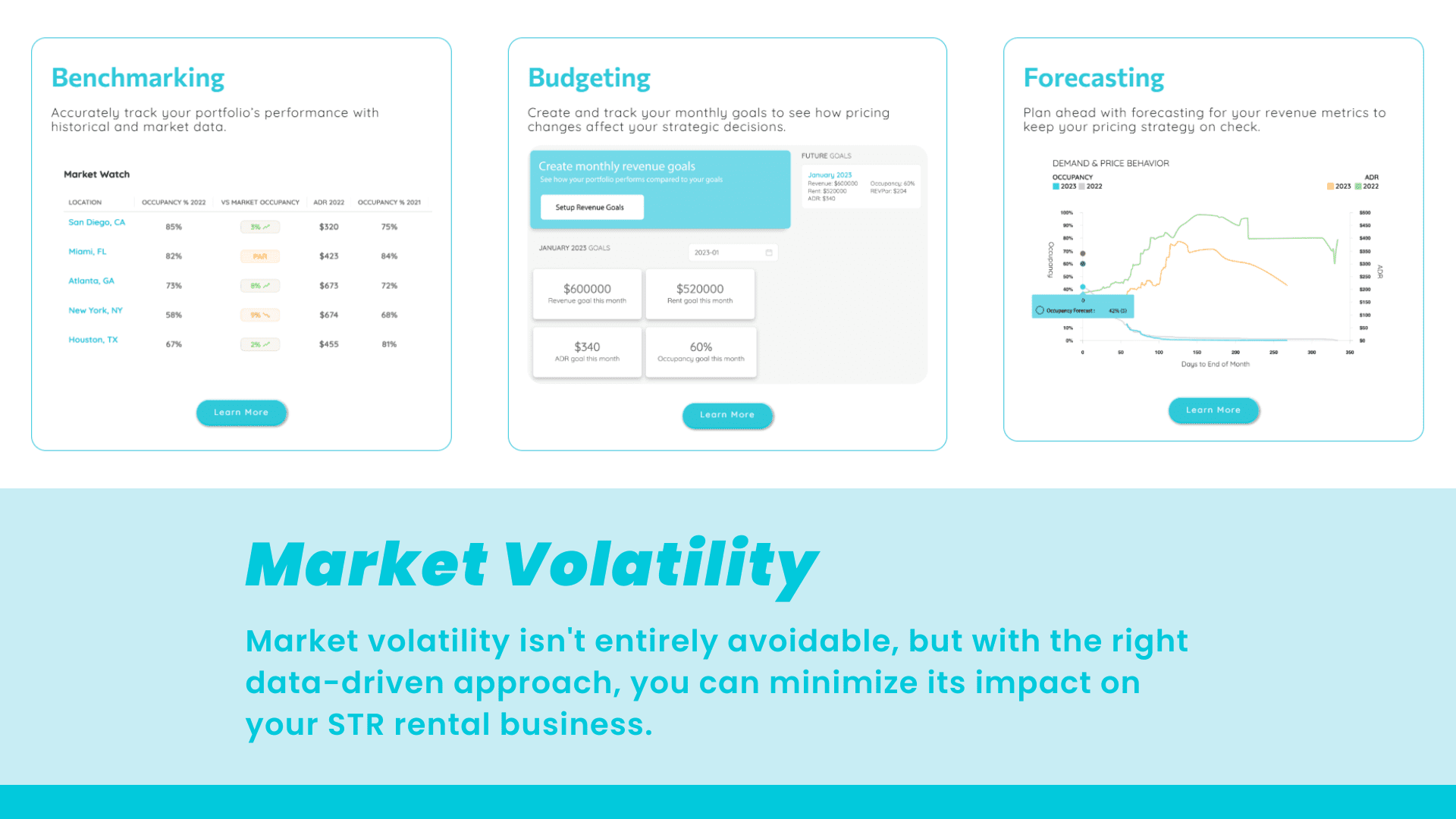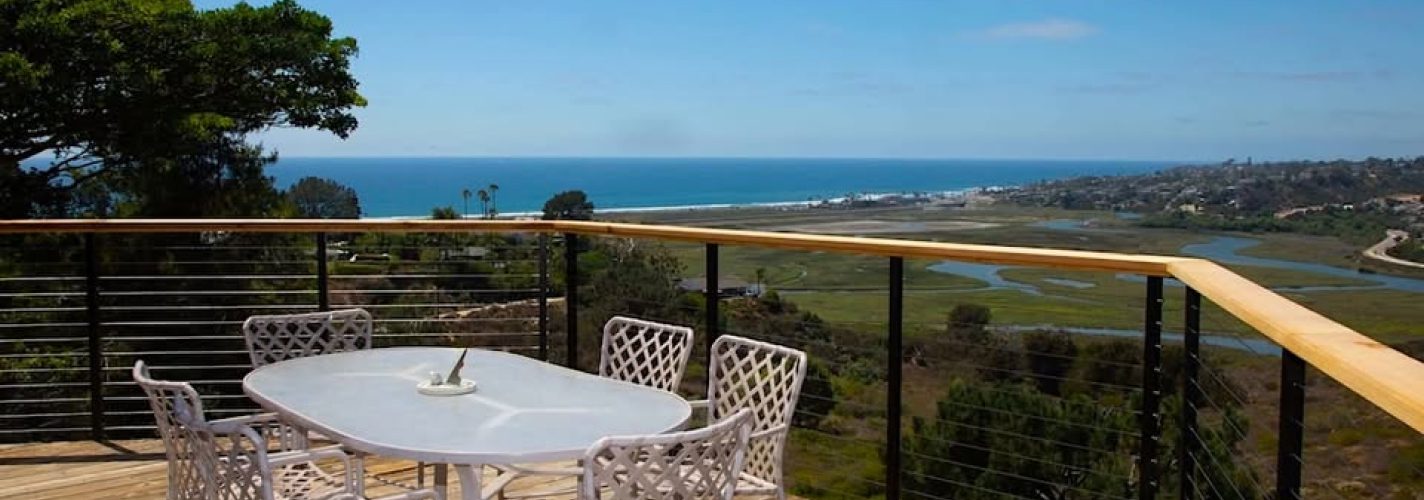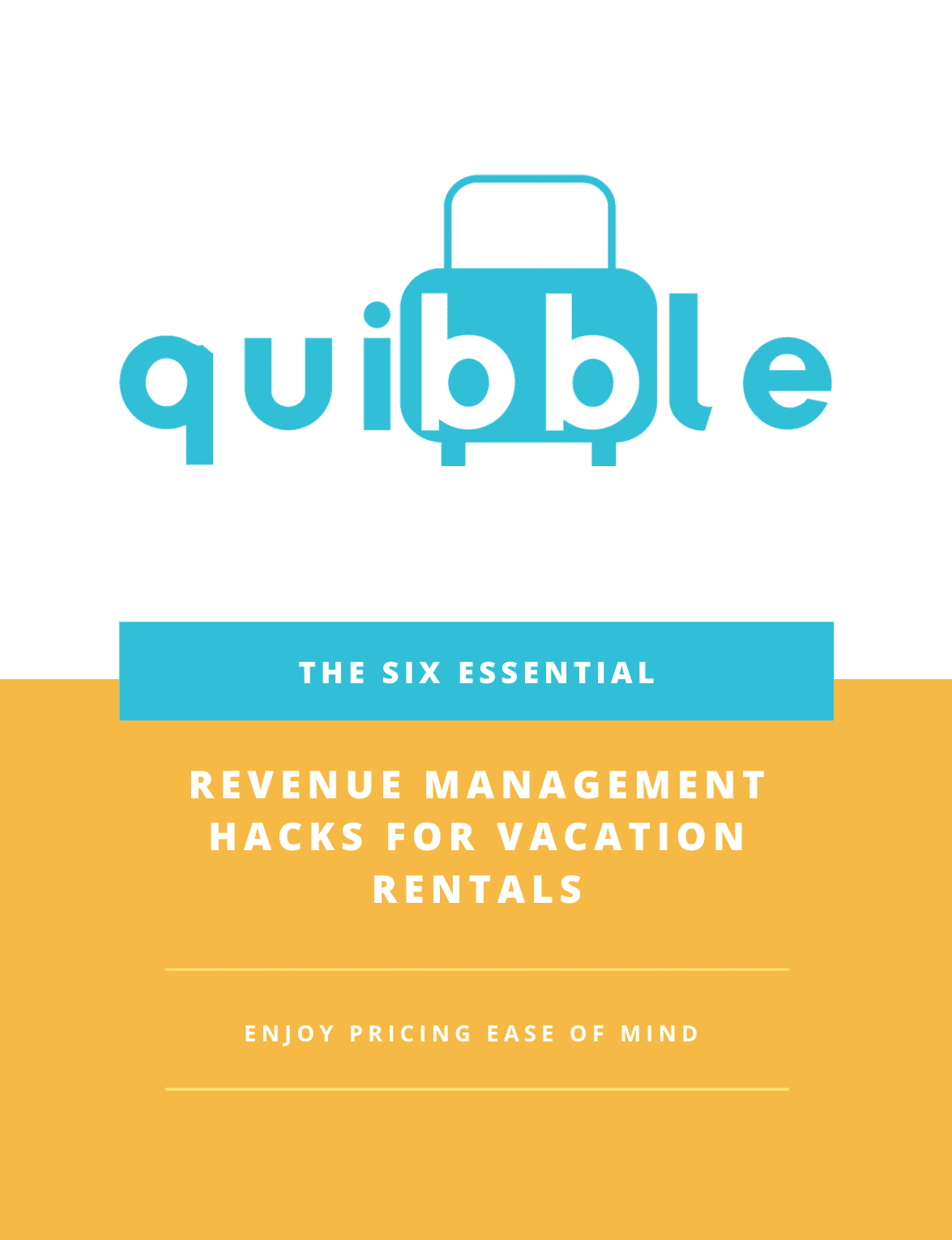Market volatility is an inherent challenge faced by short-term rental (STR) owners and property managers when implementing dynamic pricing strategies. Fluctuations in demand, seasonal changes, and unforeseen events can impact STR rates, leading to missed revenue opportunities or underpricing. In this post, we’ll discuss some valuable tips for overcoming market volatility when implementing dynamic pricing for your short-term rental properties.
Understanding Market Volatility in the STR Industry
Before we dive into solutions, it’s crucial to comprehend the nature of market volatility in the short-term rental industry. Various factors contribute to fluctuating rental demand and prices, such as seasonal variations, local events, economic conditions, and travel trends. In an article posted by Evolve, US regional trends in the vacation rental industry for Winter 2022-2023 indicate that market supply and demand are continuously growing, with demand at an all-time high. However, the growth rate of supply is higher than demand, causing increased competition among vacation rental properties.
The short-term rental (STR) market is known for its fluctuations and ever-changing nature. Unpredictable factors like economic strain and abnormal weather patterns have also impacted booking behavior and destination preferences. Thus, property owners need to adapt to these trends and implement effective revenue optimization strategies to succeed in today’s dynamic market. Let’s dive deep into the following data-driven strategies to combat market fluctuations and optimize your revenue potential:
Data-Driven Strategies to Combat Market Volatility
1. Historical Booking Data Analysis
Start by analyzing historical booking data to identify trends and patterns. Utilizing past pricing patterns can provide valuable insights into forecasting future demand and trends. Conduct a thorough analysis of your historical rental data, considering factors such as seasonality, local events, and economic indicators that influence demand and pricing.
For instance, Evolve’s Vacation Rental Industry Trends Report highlights several key factors affecting seasonal trends in the US vacation rental market. By studying these patterns as a reference point, STR owners can better prepare for expected fluctuations in demand and adjust their pricing accordingly.
2. Stay reactive to market changes
Staying up-to-date on market trends allows you to quickly respond to any shifts in demand and optimize your dynamic pricing strategy accordingly. The key to mastering dynamic pricing is continually monitoring your strategy’s effectiveness and making adjustments as needed. Regularly track the performance of your pricing model by comparing actual outcomes with predicted results.
Keeping tabs on competitors’ pricing strategies can help gain insights into market trends and price shifts. Identify areas for improvement or new factors affecting demand to ensure your pricing continually adapts to the ever-changing market landscape. By understanding how others respond to market volatility, you can fine-tune your dynamic pricing approach accordingly.
Embrace the power of predictive analytics to forecast demand and adjust pricing accordingly. By leveraging tools that analyze historical data and market trends, you can anticipate market fluctuations and make proactive pricing decisions.
Struggling to manage your pricing strategy effectively? We’ve got you covered! At Team Quibble, we take charge of your pricing strategy and offer insightful analytics so you can concentrate on growing your vacation rental business. Our dedicated revenue managers specialize in predicting market trends and property demand, ensuring your strategy is optimized for success.
Experience a boost in revenue performance as we meticulously engineer and execute a tailored pricing strategy for your STR business. Sign-up for a 30-day free trial below:
Opt for an occupancy-based pricing approach that adjusts prices based on supply and demand dynamics. Offering last-minute discounts and flexible booking terms can increase occupancy rates during slow seasons.
Incorporate real-time data sources like booking platforms, local event calendars, and weather forecasts into your dynamic pricing strategy. These resources provide up-to-date information that can inform immediate rate adjustments, allowing you to respond quickly to changing market conditions and capitalize on opportunities.
💎 Conclusion
Implementing dynamic pricing for STRs is a powerful strategy to maximize revenue, but it comes with the challenge of market volatility. To overcome this challenge, data-driven strategies play a pivotal role. By analyzing historical booking data, keeping an eye on competitors, utilizing predictive analytics, automating dynamic pricing, and integrating real-time data sources, property managers and STR owners can navigate market fluctuations successfully.
Remember, market volatility isn’t entirely avoidable, but with the right data-driven approach, you can minimize its impact on your STR rental business. Our team at Quibble specializes in managing pricing strategies and delivering valuable analytics, allowing you to focus on operating your vacation rental business.
Book a demo by picking a convenient time slot below:










